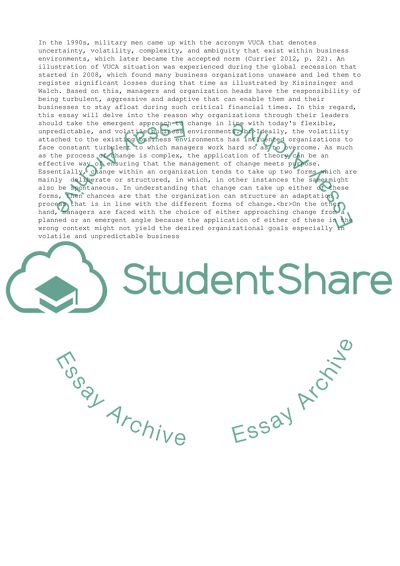Cite this document
(“Organisational Change : In today's highly volatile, unpredictable and Essay”, n.d.)
Retrieved from https://studentshare.org/management/1664472-organisational-change-in-todays-highly-volatile-unpredictable-and-ever-flexible-business-environment-organisations-can-only-take-an-emergent-approach-to-change-discuss-the-validity-of-this-statement
Retrieved from https://studentshare.org/management/1664472-organisational-change-in-todays-highly-volatile-unpredictable-and-ever-flexible-business-environment-organisations-can-only-take-an-emergent-approach-to-change-discuss-the-validity-of-this-statement
(Organisational Change : In today'S Highly Volatile, Unpredictable and Essay)
https://studentshare.org/management/1664472-organisational-change-in-todays-highly-volatile-unpredictable-and-ever-flexible-business-environment-organisations-can-only-take-an-emergent-approach-to-change-discuss-the-validity-of-this-statement.
https://studentshare.org/management/1664472-organisational-change-in-todays-highly-volatile-unpredictable-and-ever-flexible-business-environment-organisations-can-only-take-an-emergent-approach-to-change-discuss-the-validity-of-this-statement.
“Organisational Change : In today'S Highly Volatile, Unpredictable and Essay”, n.d. https://studentshare.org/management/1664472-organisational-change-in-todays-highly-volatile-unpredictable-and-ever-flexible-business-environment-organisations-can-only-take-an-emergent-approach-to-change-discuss-the-validity-of-this-statement.


